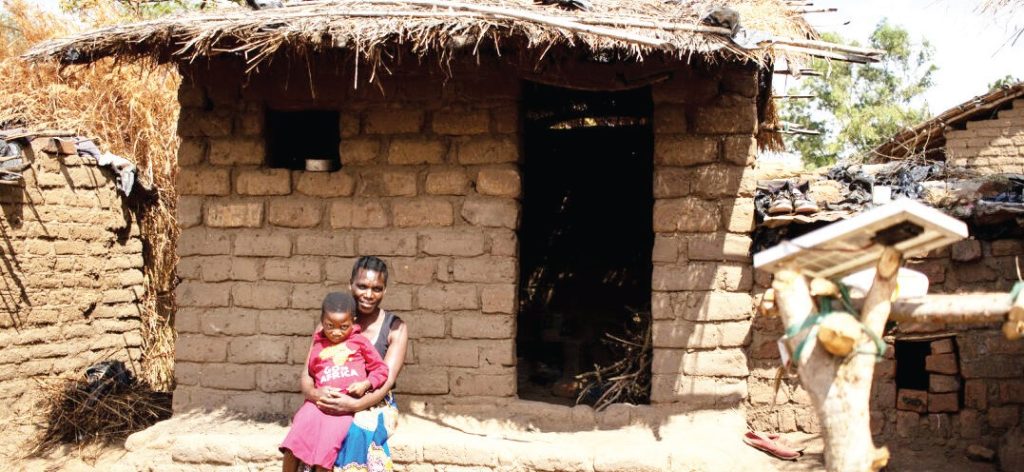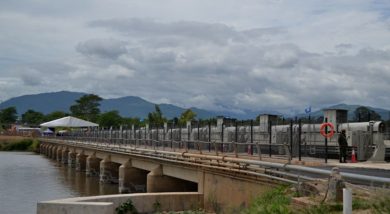Children’s education improves with SCTP
Following her divorce in 2012, 42-year-old Mercy Makina and her four children from Kadwala Village, Traditional Authority (T/A) Ganya in Ntcheu had a miserable life as she had no stable source of income.
“We were sleeping in a kitchen. It was also difficult to find food, so my children could not excel in their classes because they were going to school on empty stomachs,” Makina explains from her new grass-thatched house which she plans to put iron roofing.

But things have changed since 2021 when she started receiving K9 500 monthly under the social cash transfer programme (SCTP) also known as Mtukula Pakhomo.
She is relieved that with the funds from Mtukula Pakhomo—the government social protection initiative supporting ultra-poor households through monthly cash allocations—she can now afford to send her children to school so that they can build a better future.
“I can now support my children with everything they need in school, including the learning and writing materials and fees. I also ensure that they eat before going to school. This helps them to concentrate better in class and improve their grades,” says Makina.
One of her daughters, 15-year-old Eunice Makina, who dreams of becoming a doctor, says she is now performing better in form two at Kapalamula Community Day Secondary School (CDSS) within the district.
The mother of four is confident that education will not only unlock a better future for the family.
In Balaka, Joyce Mkwalula, 43, from Kachikuni Village, T/A Matola is glad that she is no longer counted as one of the ultra-poor people in her area as she can now afford her family’s basic needs, including sending her children to school.
“My children were constantly being turned back from school for lack of fees, but now, all five of them are learning without any problems and have school uniforms.
“My daughter struggled with swollen legs and would miss classes as she walked four kilometres to school and back; and she repeated standard eight three times because of lack of fees. With funds from Mtukula Pakhomo, I got her a second-hand bicycle which she uses to go to school,” she says.
There are many others like Mkwalula and Makina whose lives have taken a better turn because the government and its partners, including the World Bank, the German Government (through Kfw and GIZ), the European Union (EU), the Government of Ireland, and Unicef, among others, have held their hand in their times of need through the SCTP.
The Government of Ireland supports 24 377 beneficiaries in Balaka and Ntcheu districts through the SCTP.
It is aimed at alleviating poverty, reducing malnutrition and increasing school enrolment in ultra-poor and labour-constrained households.
A community volunteer and member of Umodzi Zone in Balaka, Evance Makombe, attests to the transformation in education efforts, citing that many children are now enrolled in school, both at primary and secondary level.
“Many children had dropped out of school because of lack of support. They lacked learning materials and had no uniforms, but now their parents can easily afford them through SCTP. As such, enrolment in both primary and secondary schools has improved,” says Makombe.
In a separate interview, Balaka District social welfare officer Mphatso Chiseka agrees that the SCTP has improved school enrolment as parents are now able to keep their wards in school.
“For each household that has children, there is an incentive for keeping them in school—K1 000 for primary school-going children and K2 000 for those in secondary schools. That motivates them to keep children in school,” she says.
Her Ntcheu district counterpart, Gift Kambadya, substantiates her sentiments that most children in the beneficiary households are in school, which aligns with the SCTP objectives.
“A bonus is attached to their monthly transfers when they send learners to school. Mostly, lack of money to buy exercise books, uniforms and other school-related materials was the biggest challenge, and these were solved when SCTP was launched,” he said.
Ministry of Gender, Community Development and Social Welfare deputy director for social welfare responsible for social cash transfers Laurent Kansinjiro equally attests to the increased school enrolment.
“The 2016 impact evaluation of the programme showed that it is contributing to increased school enrolment and retention rates in both primary and secondary schools, as parents/guardians can now afford to pay for school-related expenses,” he says.
Overall, Kansinjiro is pleased that the programme, currently covering all districts, is positively impacting on around 300 000 ultra-poor and labour-constrained households.
In addition, Unicef social protection specialist George Juwawo also emphasises the strong impact of the programme on children’s education outcomes, citing the increased school enrolment and participation across all age ranges as well as a safe transition to adulthood for boys and girls.
In conclusion, Juwawo observes that integrated social protection programmes have demonstrated effectiveness in reducing deprivation and support, putting households on graduation pathways.






One Comment